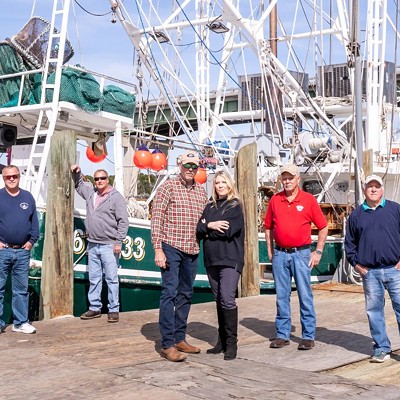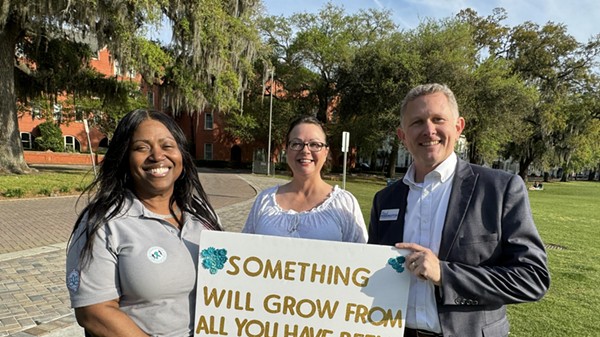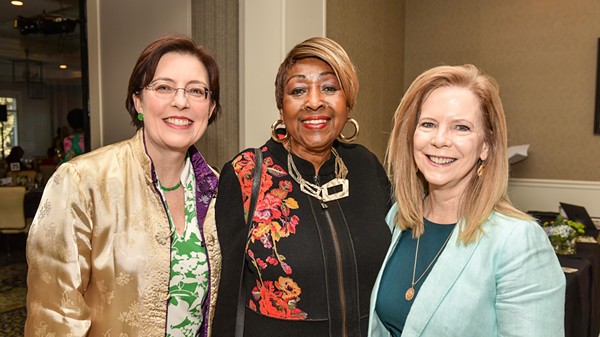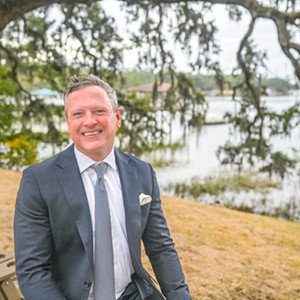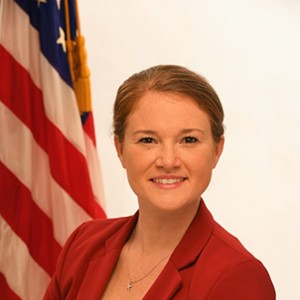Reunited, and it feels so good.
[
{
"name": "Air - MedRect Combo - Inline Content 1",
"component": "14680855",
"insertPoint": "7",
"requiredCountToDisplay": "5",
"parentWrapperClass": "fdn-ads-inline-content-block"
},{
"name": "Air - MedRect Combo - Inline Content 2",
"component": "14680856",
"insertPoint": "15",
"requiredCountToDisplay": "9",
"parentWrapperClass": "fdn-ads-inline-content-block"
},{
"name": "Air - SVP - Leaderboard - Inline Content - 2",
"component": "16852291",
"insertPoint": "10",
"requiredCountToDisplay": "10",
"parentWrapperClass": "fdn-ads-inline-content-block"
},{
"name": "Air - SVP - Leaderboard - Inline Content - 3",
"component": "16852292",
"insertPoint": "20",
"requiredCountToDisplay": "18",
"parentWrapperClass": "fdn-ads-inline-content-block"
},{
"name": "Air - SVP - Leaderboard - Inline Content - 1",
"component": "16852290",
"insertPoint": "25",
"requiredCountToDisplay": "22",
"parentWrapperClass": "fdn-ads-inline-content-block"
}
]
Its obvious that the paintings are a pair, because they have identical frames.
Yet the portraits of Robert and Sarah McClean Bolton were separated by many miles for many years. Roberts portrait has hung at the Telfairs Owens-Thomas House at 124 Abercorn Street downtown since 1957. But it hung alone, while Sarahs portrait languished in storage at the St. Louis Art Museum.
In April 2003, Elizabeth Williams was looking through an old issue of Antiques Magazine. Williams, who is a part-time Owens-Thomas employee and volunteer researcher, thought she recognized a name in a photo caption.
Information in the caption led Williams to believe that the pictured portrait was of Sarah Bolton. Could this be the same Sarah Bolton who had once lived in Savannah?
She researched the name, says Carol Chamberlin, director of the Owens-Thomas House. Sarah Bolton was very well connected to the Richardsons who built this house.
Telfair Executive Director Diane Lesko began pursuing a possible long-term loan from the St. Louis Art Museum to bring Sarah home.
That was last summer, Chamberlin says. It took a long time to work through the red tape. It was June before the portrait finally got to Savannah.
Sarahs portrait was hung next to her husbands portrait. This is the first time theyve been together since the 1950s, Chamberlin says.
In 1957, a gallery in New York loaned Roberts portrait to the Owens-Thomas House, which had opened as a house museum in 1954. It was purchased later with funds donated by Ruth Huston, Stewart Huston, Henry L. Richmond, Philip Shuey and William Wallbridge.
The museum got the opportunity to purchase both portraits, Chamberlin says. Maybe they didnt have the money to buy both. They just bought Roberts portrait.
Today, Sarahs portrait hangs beside her husbands portrait -- and it may remain there this time.
This is a long-term loan, Chamberlin says. There is no real ending time to return it,
It was sheer luck that Sarahs portrait was found, Chamberlain says. But she adds that most museums have stories about how items were found in unusual ways.
The Boltons son-in-law, Richard Richardson, was the original owner of the Owens-Thomas House. Richardson was in business with Robert Bolton, and he married the Boltons daughter, Frances, in 1811.
The portraits of Robert and Sarah are attributed to Walter Robertson, an Irish miniaturist who arrived in the New York-Philadelphia area in 1793 with fellow portraitist Gilbert Stuart. Stuart is best known for his portrait of George Washington.
Robert had once lived in Philadelphia and had relatives living in New York. Since there is no record of the artist ever traveling to Savannah, it is assumed the portraits were painted somewhere up north.
At the time the portraits were painted, Robert and Sarah were each 39 years old, which would mean the portraits were painted in 1796.
Robert was a native of Savannah and Sarahs second husband. Her first husband, a doctor, died soon after the birth of their son, John Jackson, in 1777. She married Robert in 1781.
The portraits would originally have hung at the Boltons house, which was across Oglthorpe Square from the site where the Owens-Thomas House would eventually be built. In the 18th century, having ones portrait painted was considered a status symbol.
Sadly, neither of the Boltons lived to see their daughters marriage to Richardson, or the grand house the Richardsons had built in 1819. Robert was born in 1757 and died in 1802 at the age of 45, while Sarah was born in 1757 in Chestertown, Md. and died in 1806.
After Sarahs death, her obituary in The Georgia Gazette read:
Sarah Bolton, aged forty-nine years, widow, died January 3, buried January 4. Was buried from her house in Anson Square. Has left a numerous family and considerable property. Her character is thus given by one who knew her intimately. Her known loveliness, worth and female excellencies need not be recorded, they are best felt and appreciated in the hearts of her children, but as a child she was obedient, and towards a stepmother had a sweetness of temper which showed a bosom that no unfounded prejudice could enter.
Later, the Richardsons fell on hard times. The Boltons daughter, Frances Richardson, died in 1822.
Her husband lost all of his money, so he sold everything and moved to New Orleans, Chamberlin says. That is how a lot of the Boltons things got dispersed.
Today, the portraits hang together in the dining room of the Owens-Thomas House. According to Jacquetta Haley, consultant to the Owens-Thomas House interior reinterpretation project, portraits usually hung in dining rooms or hallways in the 18th and early 19th centuries.
Descendants of the Boltons today live in New Orleans and St. Louis. Although they no longer live in the Savannah area, Chamberlain says many are willing to travel to view Sarahs portrait.
Some events are being scheduled around the return of Sarahs portrait, including a gathering for Bolton descendants. In the early part of September, were getting together with the Friends of the Owens-Thomas House so they can see it, Chamberlin says.
In the meantime, visitors to the Telfairs Owens-Thomas House are enjoying the opportunity to see both of the Boltons, side by side. The staff and the docents love having the portrait back in Savannah, says Chamberlin. Its very nice to have the couple reunited after so many years.
Yet the portraits of Robert and Sarah McClean Bolton were separated by many miles for many years. Roberts portrait has hung at the Telfairs Owens-Thomas House at 124 Abercorn Street downtown since 1957. But it hung alone, while Sarahs portrait languished in storage at the St. Louis Art Museum.
In April 2003, Elizabeth Williams was looking through an old issue of Antiques Magazine. Williams, who is a part-time Owens-Thomas employee and volunteer researcher, thought she recognized a name in a photo caption.
Information in the caption led Williams to believe that the pictured portrait was of Sarah Bolton. Could this be the same Sarah Bolton who had once lived in Savannah?
She researched the name, says Carol Chamberlin, director of the Owens-Thomas House. Sarah Bolton was very well connected to the Richardsons who built this house.
Telfair Executive Director Diane Lesko began pursuing a possible long-term loan from the St. Louis Art Museum to bring Sarah home.
That was last summer, Chamberlin says. It took a long time to work through the red tape. It was June before the portrait finally got to Savannah.
Sarahs portrait was hung next to her husbands portrait. This is the first time theyve been together since the 1950s, Chamberlin says.
In 1957, a gallery in New York loaned Roberts portrait to the Owens-Thomas House, which had opened as a house museum in 1954. It was purchased later with funds donated by Ruth Huston, Stewart Huston, Henry L. Richmond, Philip Shuey and William Wallbridge.
The museum got the opportunity to purchase both portraits, Chamberlin says. Maybe they didnt have the money to buy both. They just bought Roberts portrait.
Today, Sarahs portrait hangs beside her husbands portrait -- and it may remain there this time.
This is a long-term loan, Chamberlin says. There is no real ending time to return it,
It was sheer luck that Sarahs portrait was found, Chamberlain says. But she adds that most museums have stories about how items were found in unusual ways.
The Boltons son-in-law, Richard Richardson, was the original owner of the Owens-Thomas House. Richardson was in business with Robert Bolton, and he married the Boltons daughter, Frances, in 1811.
The portraits of Robert and Sarah are attributed to Walter Robertson, an Irish miniaturist who arrived in the New York-Philadelphia area in 1793 with fellow portraitist Gilbert Stuart. Stuart is best known for his portrait of George Washington.
Robert had once lived in Philadelphia and had relatives living in New York. Since there is no record of the artist ever traveling to Savannah, it is assumed the portraits were painted somewhere up north.
At the time the portraits were painted, Robert and Sarah were each 39 years old, which would mean the portraits were painted in 1796.
Robert was a native of Savannah and Sarahs second husband. Her first husband, a doctor, died soon after the birth of their son, John Jackson, in 1777. She married Robert in 1781.
The portraits would originally have hung at the Boltons house, which was across Oglthorpe Square from the site where the Owens-Thomas House would eventually be built. In the 18th century, having ones portrait painted was considered a status symbol.
Sadly, neither of the Boltons lived to see their daughters marriage to Richardson, or the grand house the Richardsons had built in 1819. Robert was born in 1757 and died in 1802 at the age of 45, while Sarah was born in 1757 in Chestertown, Md. and died in 1806.
After Sarahs death, her obituary in The Georgia Gazette read:
Sarah Bolton, aged forty-nine years, widow, died January 3, buried January 4. Was buried from her house in Anson Square. Has left a numerous family and considerable property. Her character is thus given by one who knew her intimately. Her known loveliness, worth and female excellencies need not be recorded, they are best felt and appreciated in the hearts of her children, but as a child she was obedient, and towards a stepmother had a sweetness of temper which showed a bosom that no unfounded prejudice could enter.
Later, the Richardsons fell on hard times. The Boltons daughter, Frances Richardson, died in 1822.
Her husband lost all of his money, so he sold everything and moved to New Orleans, Chamberlin says. That is how a lot of the Boltons things got dispersed.
Today, the portraits hang together in the dining room of the Owens-Thomas House. According to Jacquetta Haley, consultant to the Owens-Thomas House interior reinterpretation project, portraits usually hung in dining rooms or hallways in the 18th and early 19th centuries.
Descendants of the Boltons today live in New Orleans and St. Louis. Although they no longer live in the Savannah area, Chamberlain says many are willing to travel to view Sarahs portrait.
Some events are being scheduled around the return of Sarahs portrait, including a gathering for Bolton descendants. In the early part of September, were getting together with the Friends of the Owens-Thomas House so they can see it, Chamberlin says.
In the meantime, visitors to the Telfairs Owens-Thomas House are enjoying the opportunity to see both of the Boltons, side by side. The staff and the docents love having the portrait back in Savannah, says Chamberlin. Its very nice to have the couple reunited after so many years.



